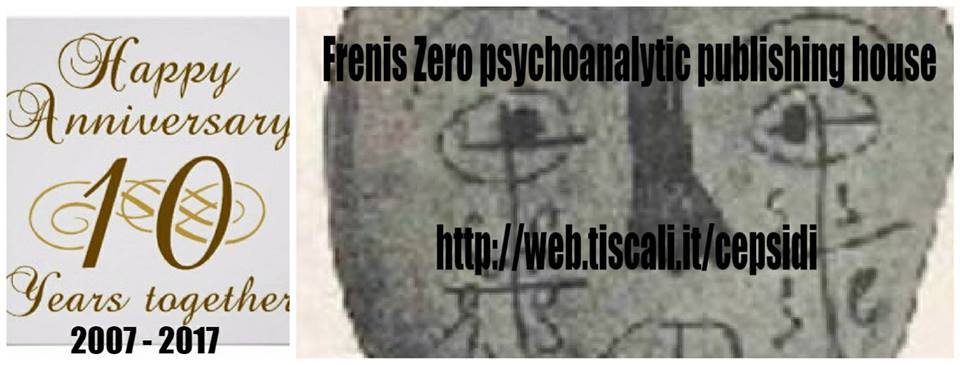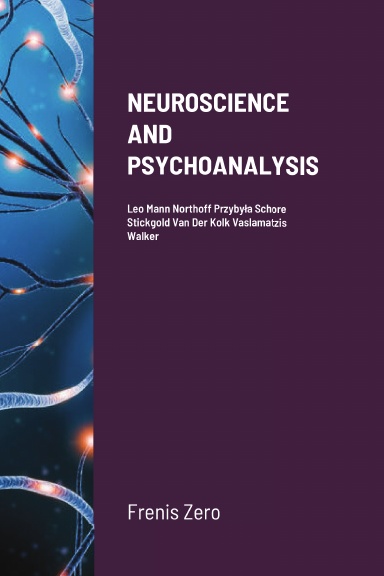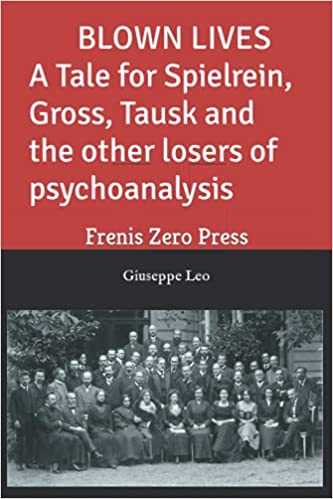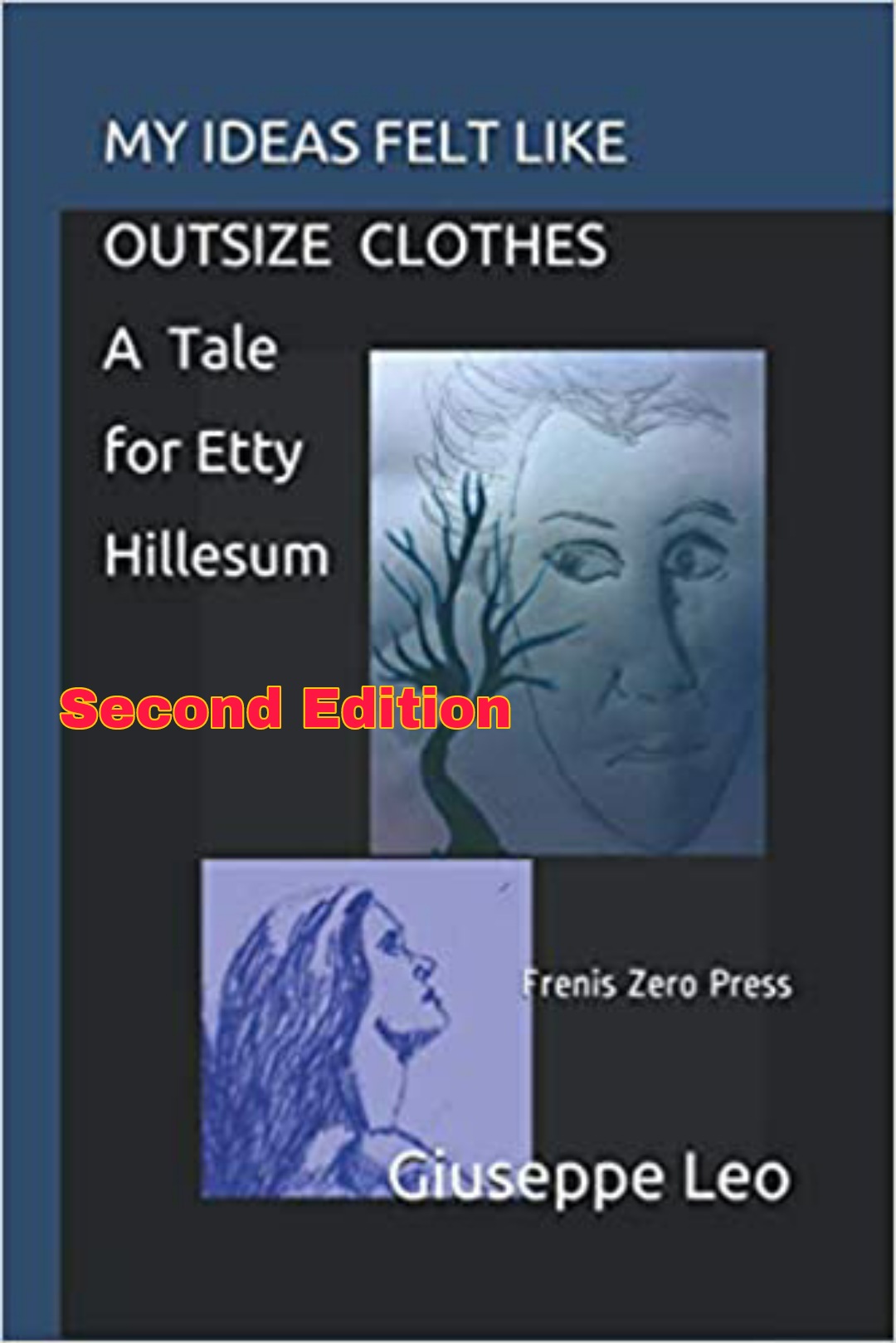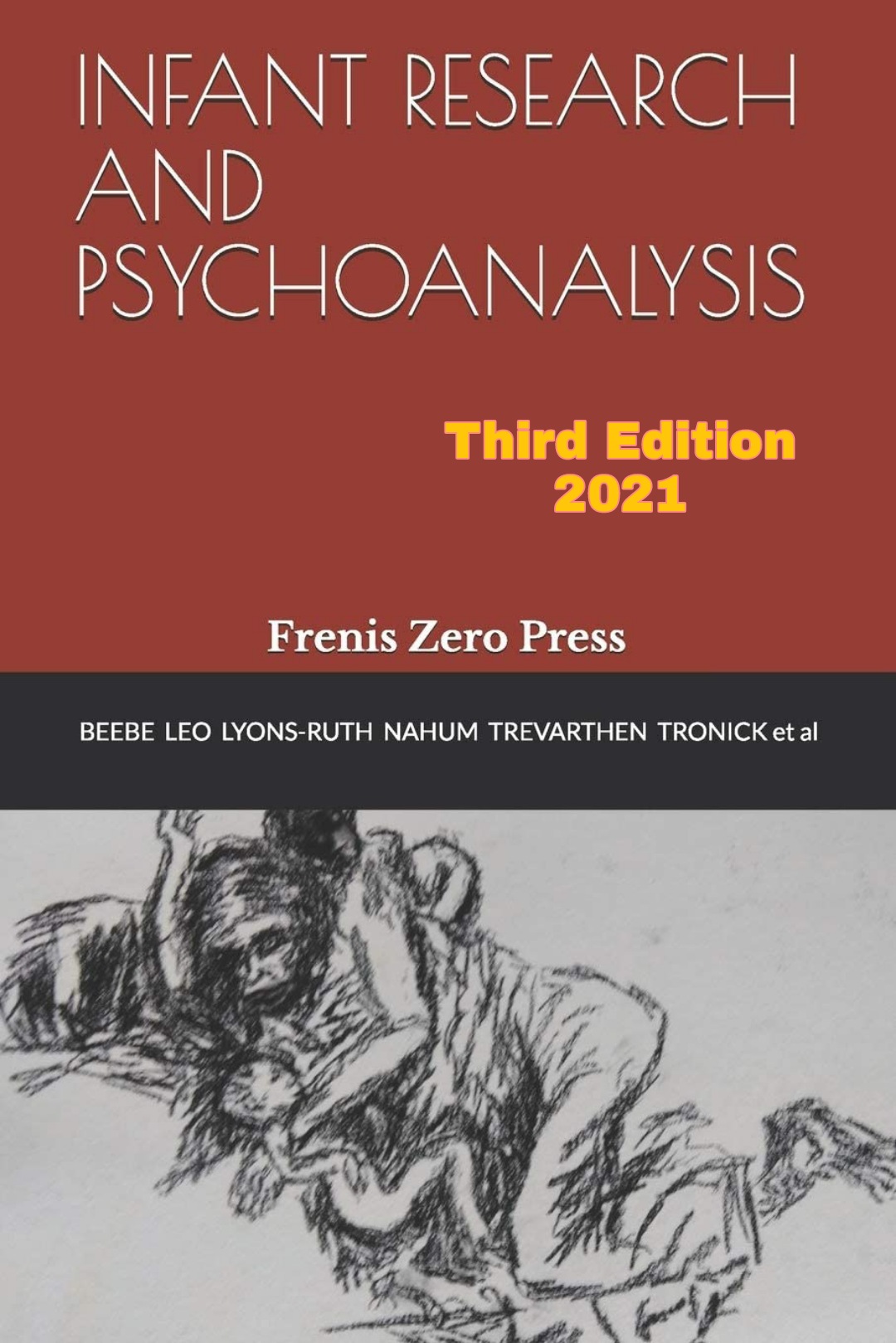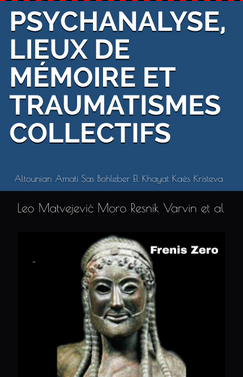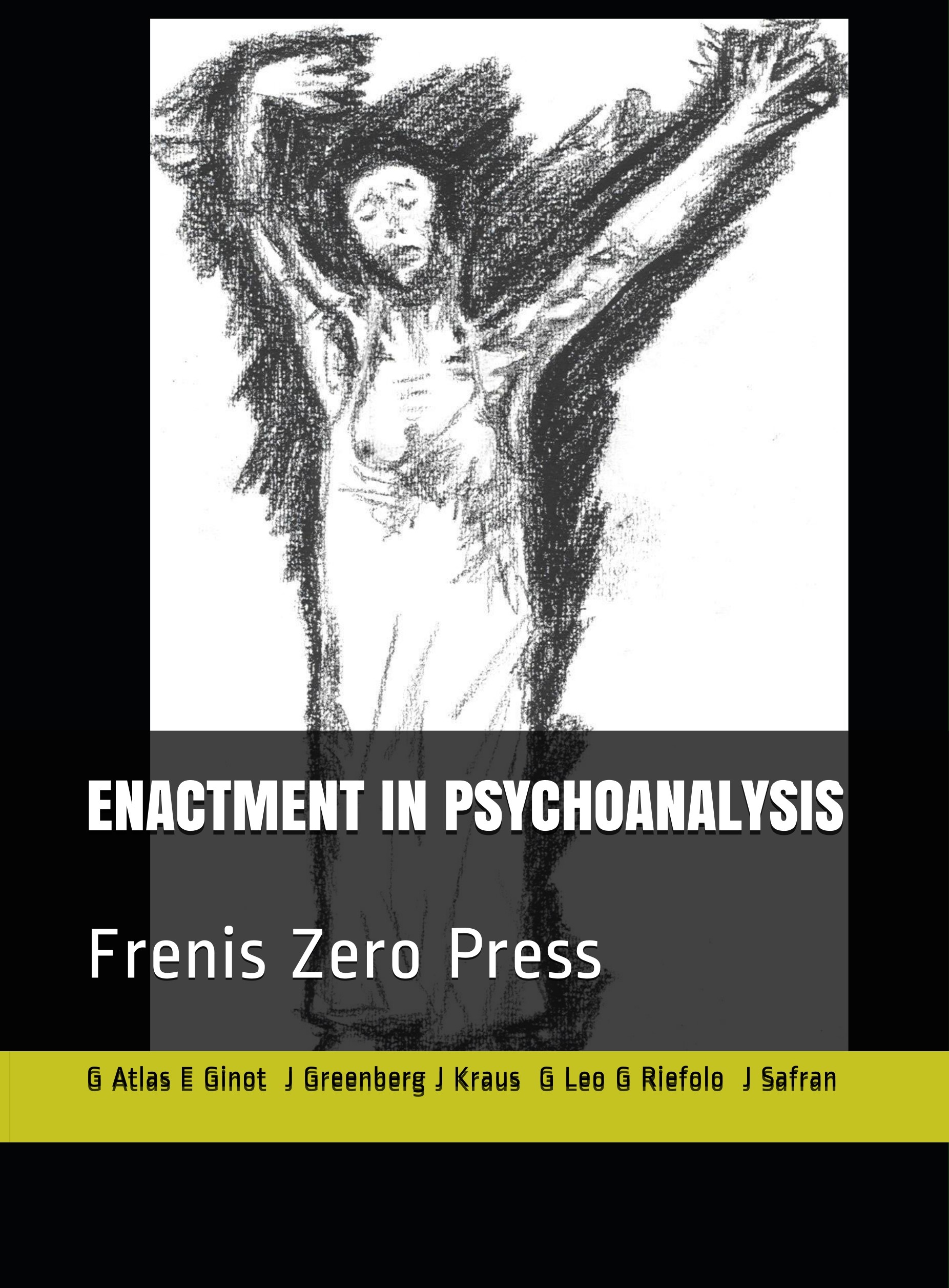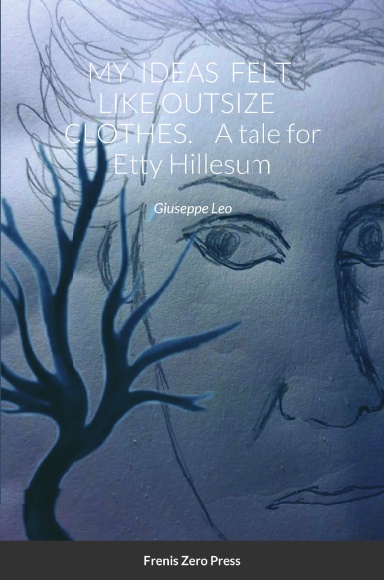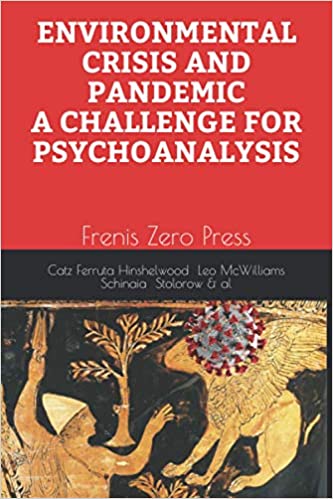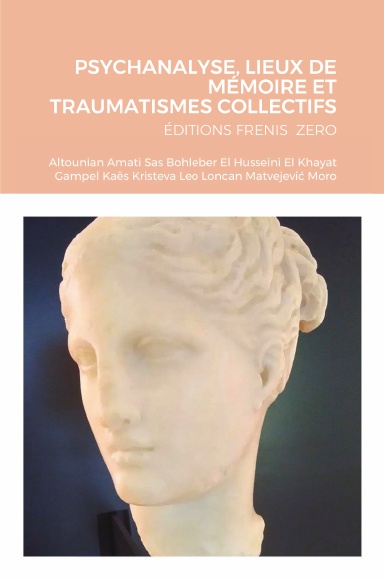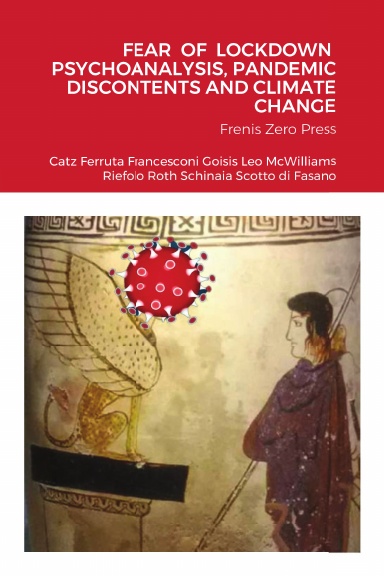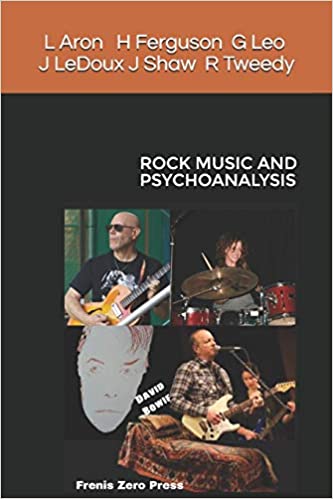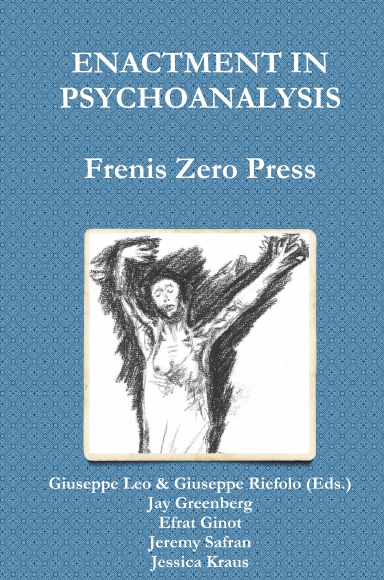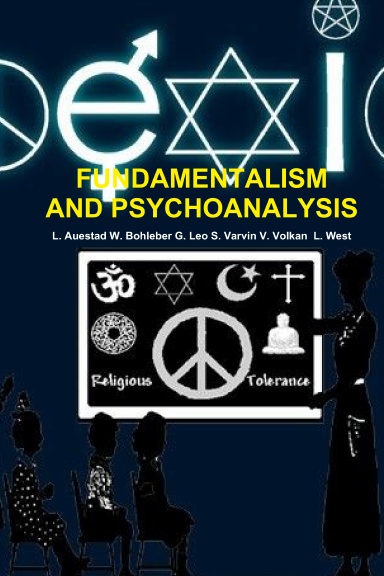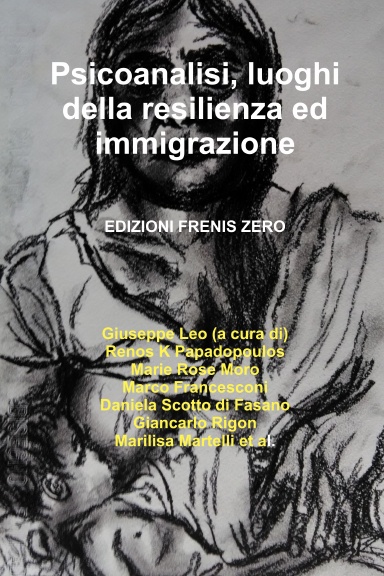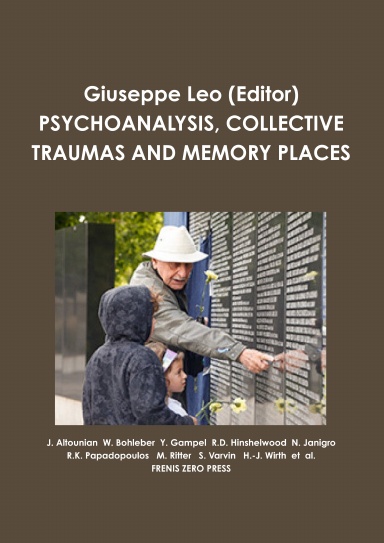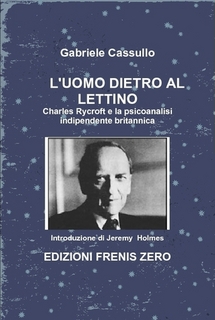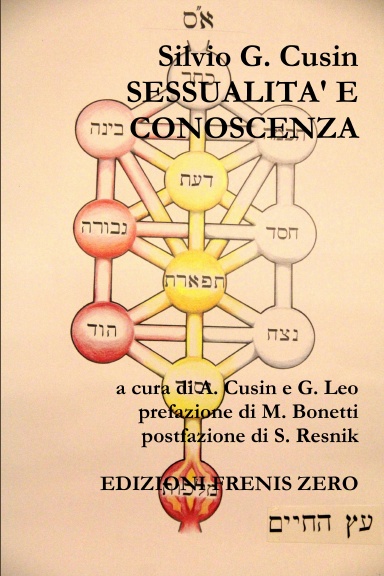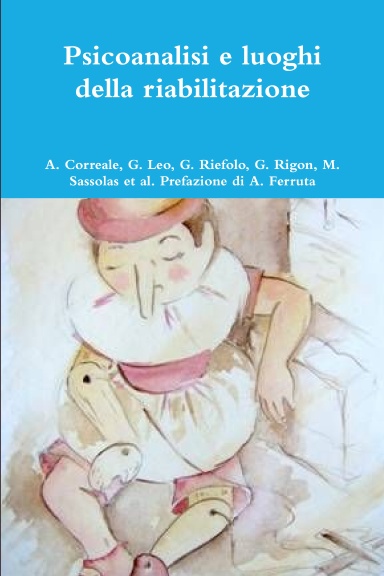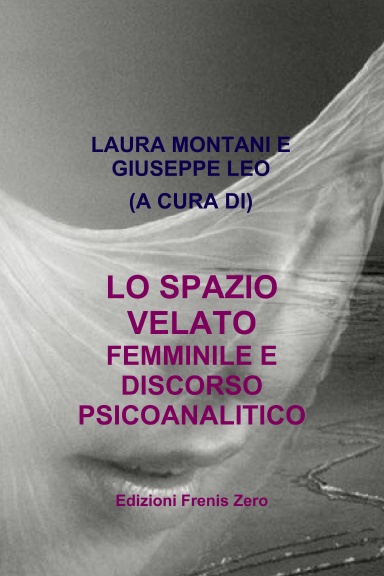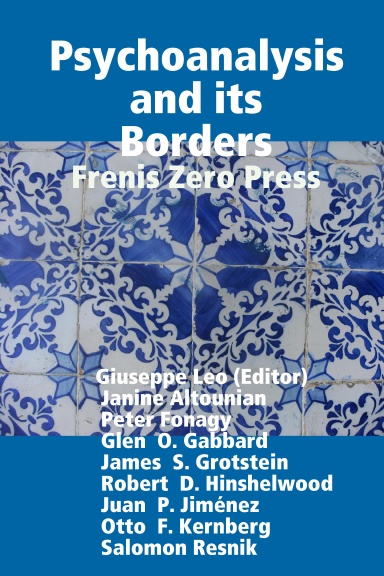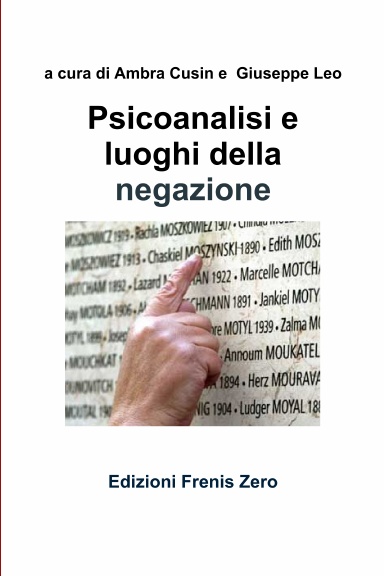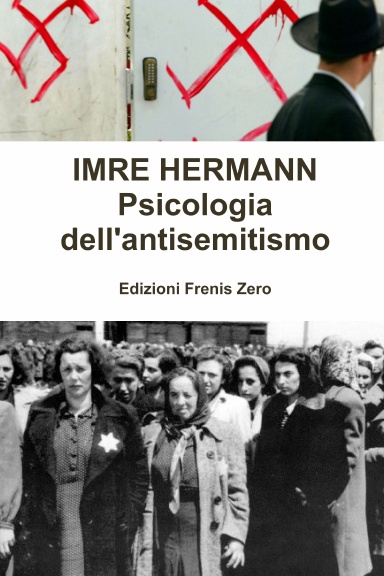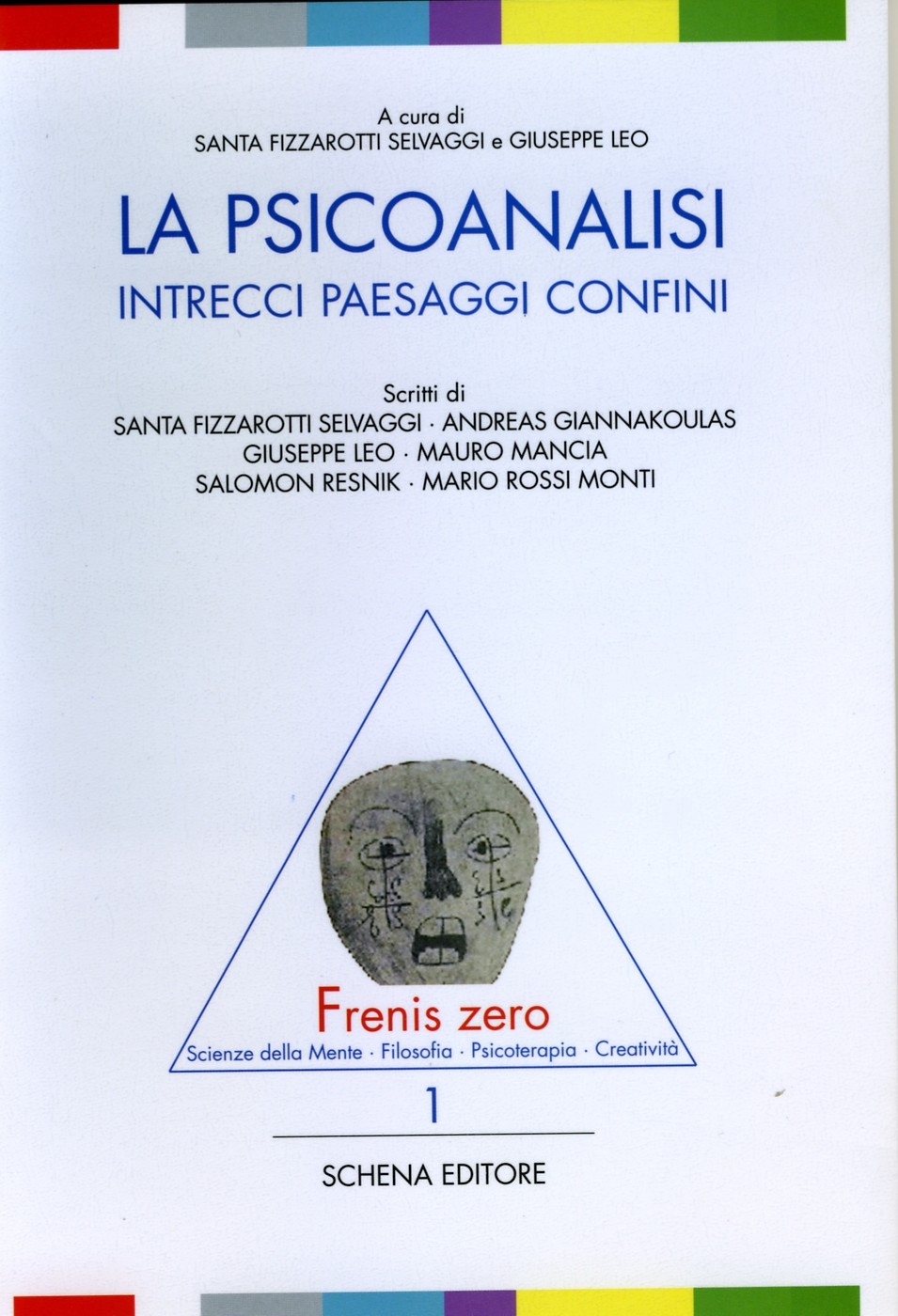|
There are
patients who appear quite ordinary during the course of the initial
consultations and of the
first months of
the analysis, at least on the surface.
They complain
about being depressed, or anxious, unsatisfied with their lives, with
their
relationships or
with their jobs. They tell a story which appears quite ordinary as
well. There are no
abuses, no tragic
losses, no dramatic deaths. However, if we listen carefully to what
they say we
realize quite
soon that something is out of tune.
There are small
discrepancies, inconsistencies, incomprehensible dissonances.
Sometimes you
simply cannot
understand the relationship between the normal, biographically
detailed story which
is told and the
deep and repeated unhappiness resulting from it. Sometimes you cannot
explain the
disproportion
between the absolutely normal events they tell and the
persistent inability to lead a
satisfactory
life. The traumatophilic2 character of the events they describe is
intriguing because it
doesn’t offer a
logical explanation. Unlike other patients, these patients do not tell
nor present a
particularly
difficult or wearying family context.
For a while, in
the beginning, the analysis seems to develop in a simple and natural
way. Patients
come willingly,
they have gladly made room for the sessions, both in the inner and in
the external
world. They soon
acknowledge a sense of immediate relief and well-being, and they are
grateful
for it. Analysis
seems to be oriented toward a natural and easy development.
Little by little,
however, as soon as the analysis gets to the heart of the matter, we
notice a few
uncommon, out of
the ordinary elements, particularly remarkable in the counter
transference.
In the
transference-counter transference dynamics, we are met with the
repetition of those extra–
ordinary
protections (Mitrani, 2001), of those extraordinary defences set up at
some point in their
life, when the
awareness of the traumatic event would have been overwhelming for the
maintenance
of the status-quo
or for the psychic survival itself.
I want to
describe here the development of an abnormal defensive relational
barrier in some
patients. This
extra-ordinary barrier is characterized by schizoid or maniacal
defences and by the
constant and
protracted misuse of splitting, projection, and denial. These
defensive maneuvers start
only after the
development of an intimate relationship with an object, a relationship
which has often
been
avoided and from which they have often escaped to protect the object
and themselves from a
possible
breakdown.
Those
defences are the answer to traumas sustained but not immediately
perceived as such by the
patients
and, what is worst, by the external environment. These traumas are
characterized by
physical
and emotional neglect, separation from the caregivers, repeated verbal
violences and
abuses,
protracted exposure to serious depressions, paranoid features or other
major parental
pathologies
(included serious and disabling phisical illnesses), continuing
distorsions of the
emotional
and cognitive competences by the primary objects and many others.
These traumatic
experiences
are less striking than the traumas characterized by physical or sexual
abuse, or by the
exposure
to dramatic violent events, and for this reason they developed with
little acknowledgement
of
their traumatic nature by the patient and, worst still, by the
external environment. (Meares, 2000)
Sometimes
these traumas occurred in periods of life when the traumatic
experience was not
representable,
that is when the explicit memory wasn’t yet structured. In this case
we are dealing
with
the emotional and affective memory, the implicit
memory, which communicates its
mnemic
images
through the perceptive-receptive canals. At times the traumatic
experiences started at a very
early
stage of development, but then went on for a very long time and left
clear memories in the
patient,
who, however, cannot stand the exposure to such memories. Sometimes
the traumatic
character
of the experience completely escaped everybody’s notice and the
suffering, or, better, the
defence
from suffering developed mainly through the mechanisms of denial and
splitting, early
primitive
defences reactivated only for this purpose.
The
aim of this work is to present, through some clinical material, the
emergence of the traumatic
elements
in the transference, that is their reactivation in the relationship
with the analyst, which is a
prerequisite
for those traumatic elements to be understood and transformed.
What
differentiates those patients from others equally traumatized is the
development of the
analysis
in two movements: the first movement is focused on the reception and
the comprehension
of
more superficial factors, whereas the other is focused on deep
traumatic elements. These
elements
become accessible only after the development of an early stage of
reception and exposure
to
a constant and emotionally sympathetic setting, that is precisely what
the analytic situation
should
be. It is possible to differentiate the trasferencial and counter
transferencial elements in the
analyic
situation of the present from the experiences of the past only after
the development of a
different
relational model, characterized by attention, comprehension and, above
all, a careful use of
time
and space. I want to emphasize this last element, because a steady
feature in all those patients
seems
to have been a continuous unwarranted interference in their time and
space.
If
we think that we can reach such processes of transformation that can
break the traumatophilic
chain
only through the reactivation of the early traumatic experience in the
transference, we must
pay
careful attention to all the
elements developed in the analysis, that is also to the
psychosensorial
elements and generally speaking to the the extra-verbal moments and
not only to
the
verbal elements.
The
deep work of the analysis with these patients should be carried out
with careful attention to the
micro-phenomena,
to the micro-fractures of time and space in the setting during the
analytic hour.
Betty
Joseph (1985) stresses that “If we work only with the part that is
verbalised, we do not take
into
account the object relationships being acted out in the transference…We
need to understand the
patient’s
current internal state in term of the total interpersonal situation
the patient creates in the
transferernce
with the analyst”.
Trauma
The
history of psychoanalysis coincides with the theory of trauma. From
Freud until today trauma
has
always maintained a central position in understanding the psychic pain
even in the different
theoretic
positions. In this paper, following a theoretic line which starts from
Freud and goes
through
Ferenczi to more recent authors ((McDougall, 1982, 1989; Giaconia e
Racalbuto, 1990) I
consider
traumatic those events which cannot be integrated nor worked out, and
which persist like
leaks
in the continuum of mental functioning.
They
remain like silent areas of the mind, and they damage both the
thinking process and the very
thoughts,
preventing the symbol formation. In these situations the body may
become a
representational
area and realize the concrete representation of primitive phantoms
through
coenaesthetic
perceptions.
Memory
The
philosopher Paolo Rossi in his book “The past, the memory and the
oblivion” (1991) says that
in
the philosophical tradition, memory refers to a persistence, a reality
somehow continuous and
untouched,
whereas the reminiscence or recalling refers to the capability of
retrieving something
that
one had in the past and has forgotten. For Aristotle remembering
implies a deliberate effort of
the
conscious mind, an excavation or a voluntary search. Whereas for the
Platonic tradition memory
is
a form of knowledge connected to the true knowledge that the soul can
reach.
So
we have memory/ oblivion on one hand and remembrance /forgetfulness on
the other. So we can
have
memories which we will never remember and that nevertheless constitute
the most intimate
and
profound identity of the person. We know very well that patients in
analysis will not necessarily
get
to remember those events or traumatic experiences from which their
symptoms or their pains
originate.
Those past events may have happened before the development of the
memory system
which
is able to encode and retain the past experience in a way that can be
represented, consciously
or
unconsciously, as a story. Also Ricoeur’s philosophical reflection
on time and memory (1998) is
helpful
in suggesting the analyst to be considered as a historian whose work
enables the patient to
acquire
a historical
consciousness of his unconscious.
Peter
Fonagy (1999) underlines that : “The only way we can know what goes
on in our patient’s
mind
, what might have happened to them, is how they are with us in the
transference…Therapeutic
action
lies in the conscious elaboration of preconscious representations,
principally through the
analyst
attention to transference.”
During
the course of an attentive and empathic analysis
we can, in my view, restore the patient to a
good
enough memory of the Self, even without the development of proper
memories from his past.
The
patient may testify to his experience, without being constantly forced
to remember the
traumatic
elements. Actually I do think that through the experience of the
transference–counter
transference
dynamics the analysis can restore the human beings to the dignity of
their memory and
their
witnessing, freeing them from persecutory recollections of the past or
from the residual tracks
of
those recollections.3
Transference
and counter transference
As
Freud emphasized in his early writings, transference is central in
analytic work. He discovers
that
the work of analysis
revolves and depends upon the handlings of transference (1912)
and this
statement
remains for every analyst the basic element of any clinical experience
with every patient.
Whatever
are the troubles and the suffering of the patient, these must be
reactivated in the
transference
in order to be understood and transformed.
Following
Freud’s lead, Melanie Klein (1952) further developed the analytic
thinking about the
transference
and proposed that the transference situation encompasses a whole
constellation of past
experiences,
emotions, defences, and object relations. For Melanie Klein and her
followers the
transference
is at the centre of a movement which goess from the past through the
present time
toward
the psychic change. Therefore transference is eminently the place of
psychic change.
Betty
Joseph (1989) for example takes into account all the minute shifts in
transference, and stresses
the
unconscious need for the patient to maintain a psychic equilibrium
which resists his conscious
desire
for psychic change. A constant setting facilitates this process of
psychic change.
In
the last few years in psychoanalytic literature special attention has
been given to the analyst’s
subjectivity
and to the influence of countertransference on the analysis. The
attention previously
given
to the intrapsychic level of the patient is now focused on the
intrapsychic level of the
interaction
between patient and analyst. (O’Shaughnessy, 1983).
Luciana
Nissim Momigliano has been a creative and original interpreter of this
school of thought in
Italy.
In Shared Experience: the
Psychoanalytic Dialogue (1992)
the dominant theme was the hope
that
these two people in a room (the patient and the analyst) will be able
to communicate with each
other
and share their experience.
In
this view countertransference is no longer considered a disturbing
element in the analytic work,
a
plain expression of the analyst’s difficulties or a pure product of
the patient’s projective
identification,
but rather a specific emotional context that originates from the
encounter of that
patient
with
that analyst.
In
every analytic treatment we meet some countertransferencial and
transferencial somatic elements
that
represent the Ps-D dialectic, and the narcissistic-object transference
dialectic.
In
this work I particularly insist on the sensory-somatic experiences as
a privileged area of
transmission
of those imperceptible elements of communication, whose reception and
awarding of
meaning
allow the analytic work to develop along paths that would remain
otherwise unknown.
The
concept of countertransference becomes quite amplified: we are dealing
with the area defined
by
Gaddini psycho sensory
area, in which fantasies are
expressed by means of bodily functioning.
Gaddini
calls them fantasies
in the
body. “A primitive fantasy expressed in the body can hardly be
further
elaborated in the course of development. In the infant’s mind,
before fantasy can be
associated
with an image, thus becoming a visual fantasy, it is experienced in
the body – namely, a
particular
physical function is enacted and altered according to its mental
significance. These
fantasies
in the body remain usually enclosed in a primitive and exclusive
body-mind circuit and
are
not available to further mental elaboration, as visual fantasies are
instead.” (Gaddini, 1982)
Lucy
Lucy
is 39 at the beginning of her analysis. She originates from a small
town in Nporthern Italy,
where
her family owns a farm and still lives in a big house. During the
initial consultations Lucy
presents
herself as a simple, naïve girl, rather depressed, disheartened by a
clerical work of little
interest,
with a narrow circle of friend. She doesn’t recall a particularly
difficult or wearying story,
nor
do I see anything suspicious in that sense .
Her
father had died two years before. He was a rather authoritarian and
aggressive figure especially
in
the family context, but for a long time she’ll present him as a
severe but fair man, basically good
and
beloved by all family. The mother instead is presented from the very
beginning as a weak
figure,
querulous and complaining. She would often be sick and unable to react
to the frequent
outbursts
of anger of her husband and to his verbal and physical aggressions.
Lucy is the rebellious
daughter
who mostly incurs her father’s furies, especially because she
demands more freedom and
independence.
As an extreme concession she obtains to come and live in Milan to
attend
University.
She doesn’t say very much of the 20 years she has spent in Milan
ever since, thus
suggesting
a slight disillusion compared to the initial expectations.
For
the first six months the analysis seems to develop quite well
following the initial consultation’s
tracks.
Lucy seems very interested in the functioning of the analysis, and
extremely grateful for the
attention
that her lonliness and depression at last can receive.
Then
I slowly realize I have unexpected and incomprehensible fits of
drowsiness during her
sessions.
The sessions are at different time every day and I cannot understand
the cause of my
drowsiness.
I get to dread these sessions with Lucy, because I fall into a heavy
sleepiness, a kind of
more
and more incomprehensible black–out. In the meantime new and really
bizarre elements of
her
story sift through my numbness. Lucy is talking about her maternal
grandmother, an almost
mythological
figure, living representation of persecutory ghosts, who tells her
stories of local
superstitions,
of flower wreaths put on the windowsill to calm down the witches, of
spells cast by
wizards
and witches. Lucy is also often repeating: “She’s ugly! She’s
ugly!” referring this time to
her
paternal grandmother, that seems to embody a kind of witch too. I have
trouble to disentangle
myself
between old mountain legends, and present time fears, between phantasy
and reality. I start
to
suspect the presence of a delusional core in this patient, well hidden,
but very well organized.
Little
by little Lucy is able to describe the phenomena of physical
depersonalization, of
coenaesthetic
misperceptions, that assault her on the couch. She feels she is
floating in the air, or
she
is sticking to the couch, she feels she is petrified and cannot move,
and I understand she is as
terrified
as I am.
I
received these communications with great difficulty, because in the
meantime my sleepiness was
getting
worse. One day I suddenly wake up, perfectly clear minded. I had the
impression I was
dreaming,
and that in my dream someone was uncovering a grave, and that I was
free to get out. At
this
point I hear Lucy say: “It seems to me they just uncovered a grave,
I feel freer now.” The
nightmare
is over, for both of us, and I won’t have those weird phenomena
anymore, true spells cast
by
the witches.
Months
later the story will clear up a little more. During a session Lucy
brings a dream. She has a
doll
in her lap. To her deep horror the doll starts to move and drags
herself about the room. Then the
doll
loses her bits, one by one, and Lucy, with growing horror, is forced
to follow her and to pick
up
these bits, one by one, realizing that the doll is alive, but at the
same time inanimate. Nothing
comes
to her mind, in association, but something comes to my
mind. I ask her, with great caution,
if,
by
chance, she ever had an abortion. Terrified, she confesses that, as
soon as she had arrived to
Milan
she had gone out with a boy, whom she wasn’t really involved with,
and immediately had
become
pregnant. She had to undergo an abortion, hidden from her very sex
phobic family. She had
never
told this story to anybody, not even to her friends, and she had spent
every single day after
that
episode thinking of it with deep guilt and sorrow. “I think of that
abortion every day.” I say
that
it seems to me that with the abortion she had killed and buried also a
part of herself. Maybe it’s
for
this reason that she has been feeling for a long time as if she was
buried in a grave. She answers
that
it has been really like this for a long time, and that ever since she
has perceived herself like
“someone
no longer alive”. After the abortion she has never had a
relationship with a man. She adds
that
in these recent months, however, she had the impression to be no
longer alone and that: “If I
was
buried in a grave you were with me for sure.” I confirm her that I
had the impression of having
gone
through a very choking period too.
Bollas
in his book The shadow of
the object (1987) speaking of
the unthought known, emphasizes
the
relevance of the evocative mental process, through which important
information on the self
state
emerge from the deepest part of the Self. During the psychoanalytic
dialogue the analyst too
can
be in a state of not-knowing-yet-experiencing-one (Bollas). These
experiences can often be
bodily
experiences, like drowsiness, or stiffening, as widely described in
psychoanalytic literature.
Also
Thomas Ogden in his book The
primitive edge of experience (1989)
termed the psychological
organisation
generating the most primitive state of being the
autistic contiguous position. He
described
briefly some possible countertransference responses to the analytic
experience in an
autistic
contiguous mode: “More
specific to the autistic contiguous mode of experience is
countertransference
experience in which bodily sensations dominate… Very frequently the
countertransference
experience is associated with skin sensation such as feelings of warm
and
coldness
… as well as tingling, numbness”. The
contact between the patient psychic primitive state
of
mind and the analyst psychic primitive state of mind produces a
countertransference
characterized
by sensory-somatic experiences, especially when we are dealing with
those traumatic
events
which cannot be integrated nor worked out.
I
want to comment briefly on the memory/trauma relation regarding this
episode. In the
associations
Lucy brought up to the doll’s dream, there was no memory of early
traumatic
experiences,
and the only association was with the abortion experience. That
episode had taken the
shape
of a highly dramatic experience inside the patient, the repetition, in
my view, of previous
early
traumatic experiences she couldn’t recall. She had never talked
about the abortion with
anybody
for twenty years. A friend she was living with at those times (and who
knew the story) had
soon
become a constant persecutory object in her nightmares. The abortion
following a casual
sexual
experience had in fact confirmed her worst sex phobic fears and her
persecutory suspects
connected
with the relationships with other people.
Actually
Lucy’s dream refers not only to the abortion. Lucy represents with
great efficacy the
perception
of a growing and dramatic fragmentation of the Self, which goes
together with the
transformation
into an inanimate object. We are deep into that condition defined by
Gaddini as
psycho-physical
syndrome (1982) which is typically fragmentary and representative of a
mental
functioning
which precedes the integrative process. The non-integration
is the first functional
organization
of the Self, a fragmentary organization which must be distinguished
from the
disintegration
resulting
form the anxiety of loss of the Self. The latter presupposes the
existence of
a
certain degree of integration, therefore a phenomenon which has
regressed from a more advanced
state.
In the first case, according to Gaddini, we must proceed for the first
time from a non–
integrated
functioning to integration, implying the integration of parts which
had never been
previously
integrated. Thus the analysis becomes the means through which we can
restore the never
born,
aborted parts of the Self, which are at risk of living a life of thei
own as inanimate and
critically
persecutory objects.
The
experience lived by Lucy is absolutely terrifying. It’s an
experience that can be communicated
only
through contagion (projective identification), and which cannot have
meaningful and
communicable
ideational representations. The anxiety for the experience of the
abortion mirrors in
analysis
the anxiety for a possible abortive failure of the analytical
experience. If the analyst goes
on
sleeping he won’t be able to modify the barrier of unreality and
lack of significance of the
patient.
Analysis
in two movements,
as I was saying in the introduction, meaning that only establishing a
really
relational analytical modality one can develop the identification and
counter identification
necessary
to penetrate into the deepest layers of the unconscious and receive
the primitive nonintegration anxiety
of the patient.
“The
deep work of the analysis with these patients should be carried out
with careful attention to the
micro-phenomena,
to the micro-fractures of time and space in the setting during the
analytical
hour.”
I was saying in the introduction.
I
want to bring two fragments from two sessions, as an example of the
micro- processes. They are
interesting
because they evidence the remembering of the traumatic experience and
its subsequent
transformation.
When
Lucy starts the session she is particularly tense and nervous. She
seems to fall into one of her
introspection
states, absent and retreated from the background. She doesn’t speak
and remains
indifferent
to my attempts to stimulate her.
Slowly,
without losing control, I become silent too, and I realize how the
external environment
seems
particularly noisy that evening.
My
office is in a private street, where usually there is a big silence,
but that evening, instead, we can
hear
quarrels on the street, children crying, boys playing noisily.
Furthermore my entry phone is
ringing,
but nobody answers it. Lucy appears more and more irritated and
annoyed, almost panicky.
At
the end of the session, which she has passed almost completely silent,
having said only: “I don’t
know
what to say tonight, I don’t feel too well”, she gets up abruptly
and goes out, clearly in
distress.
Next
session Lucy seems happy and relaxed. She speaks of different episodes,
but I understand I
cannot
avoid talking about the previous session atmosphere. I tell her that
the day before she looked
deeply
disturbed by the external noises.
Lucy
looks surprised, but also relieved: “Yes, I felt a peculiar
annoyance yesterday, the noises
seemed
to prevent me from concentrating on myself. Sometimes it happens to
me, to be particularly
disturbed
by the external world.”
I
ask if this had happened also in the past, and if she remembers
anything in particular.
Lucy
has no doubts: “My father, of course. He was always shouting, there
never was a moment of
peace
when he was home. I was literally scared, because his furies were
violent and
incomprehensible.
Everything made him furious. I cannot stand noisy situations now.
There was no
respect
for me, for the fact I was studying or for any other thing I was doing.
On Sundays he
decided
to go to church and if we were late he would immediately shout. And if
I wanted to go out
by
myself he would shout again, because he disagreed. We couldn’t do
anything, never.”
I
tell her: “It seems to me that the most traumatic element was the
lack of respect, the continuous
humiliation.
Maybe yesterday here you felt the noises from the street and
especially the entry phone
as
an intrusion in your private time and space, totally similar to your
father’s intrusions.”
Lucy:
“It’s something that happens all the time, not only here. I always
have the impression that the
others
have no regards for me, that they have no consideration for me.
Sometimes I’m afraid to
exaggerate,
that it’s impossible that everybody is cross with me, but then I
must give in and put up
with
it.”
Analyst:
“I think that yesterday you felt invaded in a particular tiring and
needy moment of
introspection,
and you felt you were being abused also in the analysis, thus
repeating the same
situation
of abuse and lack of consideration you experienced at home.”
In
the transference repetition Lucy relives the intrusive noisiness of
her father in the episode of the
noisy
office and the entry phone disturbance, and in that situation the
analyst becomes the
persecutory
figure of her father. This experience, however, wouldn’t have been
recalled, and so
much
the less remembered by the patient, if the external noisiness wouldn’t
have suddenly become
disturbing
for the analyst as well,.
What
I want to say is that through the projective identification of the
patient, and the empathic
sharing
of the analyst, a minimal episode, a small micro trauma in the session
could be taken back
into
analysis and connected to a precise mnesic image. As I said in the
introduction, it was possible
to
differentiate the present transferencial and counter transferencial
elements of the analytical
situation
from the past experiences only after we were able to recreate a
different relational model,
characterized
by attention, comprehension, and, above all, consideration for the
other.
Starting
from this episode we were able to activate a path of significance and
mentalization (i.e. the
capability
to elaborate sensorial and bodily sensations into accurate mental
representations) of all
the
frequent episodes of depersonalization and coenaesthetic
misperceptions that she had
experienced
on the couch. We found out that they were nothing but the activation
of primitive
defensive
somatic barriers toward the continuous family intrusion. Actually her
mother also
showed
a relational model based on intrusion and lack of consideration,
although different from her
father’s.
In
the next session Lucy says: “Yesterday I had a dream. I was here, in
the session, lying across the
couch,
and I was asking myself: “Would the analyst realize that there is
something strange in my
position?
That I’m lying in the wrong way? Then the entry phone rang and you
went to open the
door,
and it seemed to me that you were trying to stop a person from getting
into the office. I got up
from
the couch, to help you, and I saw a shadow on the stairs, who seemed
very threatening. You
were
trying to protect me and prevent this person from entering the room.”
She then adds that she
was
feeling better now and thought she was more confident and daring, with
higher hopes toward
the
future, compared to the last days.
I
remark that the dream looks like a representation of what had happened
in the previous session:
“You
heard the noises as a threatening intrusion in your time and space,
and you feared these noises
could
penetrate into the analyst’s mind, and you were scared they could
divert me from thinking of
you.
The entry phone, more than anything else, was probably interpreted
like another patient, trying
to
occupy your time and your space. 4 On the other hand the analyst was
perceived like your father,
who
disturbed you with a complete disregard toward your intimacy. In the
following session there
this
experience had been recovered.”
This
had allowed her to have a visual representation of the confuse and
nameless terrors which so
often
populated her fantasies and produced dramatic sensorial experiences of
fragmentation and
depersonalization.
The man at the door (the following patient?) appeared like an explicit
threat seen
and
shared by the analyst although perceived like a shadow by the patient.
The implicit sexual
meaning
of the terror experience was immediately recognized by Lucy, thanks
also to the previous
work
done together on her difficulties to have sexual relationships after
the traumatic experience of
an
abusive and violent father.
Something
else was interesting in the dream: the first representation. Lucy sees
herself lying across
the
couch, obliquely, and asks herself if the analyst can notice how she
is out of place. Also in this
case
it seems to me that the perception that there is something deeply
abnormal in her position is
activated
and communicated. What I want to say is that in the dream a feeling,
an emotion that up to
that
moment had only been expressed through somatic misperceptions is now
represented and
communicated
through a visual representation. Very often, in the session Lucy
seemed to fall in a
condition
of trance, almost hypnotic, and she complained she could feel nothing
of her body, no
legs,
no arms, no trunk. In her past she had had some episodes of hysterical
paralysis, which
brought
her to the hospital, and all the episodes had occurred after
particularly depressing and
humiliating
events.
Discussion
Lucy
presents herself to the analysis with an ordinary
unhappiness, which until that
moment she
had
not considered a condition requiring help and change. She reveals a
lot of faith in the mutative
possibilities
of the analytical work, and finding a better job, more consistent with
her social and
artistic
expectations, is set as the main objective of the analysis. However
those elements
represented
only one aspect of Lucy personality, pathology and suffering.
In
the movie Ordinary people,
in the idyllic scenario of a rich suburban family we could soon
perceive
a dramatic reality, encapsulated in the aseptic treatment by a
psychiatrist who was
supposed
to keep away the persecutory phantoms of the past.
Also
Lucy’s problem soon appeared to be very little ordinary,
charged as it was with anxieties and
pains
unconceivable both by the analyst, in the beginning, and by the
patient herself at a conscious
level.
The
idyllic representation of the life in the small original agricultural
community was shaken by
progressive
disclosures of tragedies that had piled up in the years and in the
generations.
Lucy’s
father appeared to be the only survivor among seven brothers, who had
died all in their
childhood
because of various illnesses. The paternal grandfather had withdrawn
the surviving child
from
school, though he was very talented, and had called him back to work
in the farm. The
paternal
grandmother had then closed herself into a deep and furious resentment
toward her
husband
first and her daughter-in-law later, and kept herself removed from any
human relationship
besides
her only surviving son.
Lucy’s
mother, on the other hand, had lost her father soon after her birth (he
had died during the
war
when he was not even 20), and had been left with her grandparents in
Africa by her adolescent
mother.
Marriage
had been for both the first love experience inside an affective life
characterized for both
by
aridity, inexperience, and above all a terribile loneliness. The birth
of three children didn’t
improve
too much the affective quality of their life. Father and mother seemed
always soaked in a
kind
of perennial mistrust (on the father’s side) and fear (on the mother’s
side).
The
experience of loneliness, carelessness and continuous emotional and
physical neglect, the
repeated
paternal verbal aggressions and abuses, the protracted exposures to
the periodical maternal
depressions,
the continuous distortions of the cognitive and emotional competences
by the primary
objects,
all this had been the warp and the weft of Lucy’s childhood. All
these past experiences
were
prolonged into the mistrust, into the suspiciousness, and into the non
–integration anxieties of
her
present life.
I
think that in this phase of Lucy’s analysis I had needed the
patience and the ability not only to
reconstruct
the past traumatic experiences, but above all to transform in the
transference the
emotional
quality of the reception and of the listening as to the early (and
not-early) traumas she
had
experienced in her life. Only through the recognition of the
unpleasant feelings, only through
the
possibility of a true empathic sharing of these unpleasant feelings (where
it is possible) we can
reach
the deep level of the traumatic experience and underline the different
quality of the present
experience.
I
couldn’t had really understood the level of deep desolation and
suffocation experienced by Lucy
in
the intimate relationship with an absent object (her mother either
depressed or engaged elsewhere
with
the sister), if, on my turn, if I had not experienced myself for such
a long time that feeling of
drowsiness
and numbness which made me feel like a victim of a magic spell. As a
child, too often
Lucy
had perceived herself as a victim of some weird witchcraft, a prisoner
of insurmountable evil
forces.
The possibility to share these weird experiences with the analyst had
allowed her to have
access
to a visual representation (in this form communicable) of the
absolutely terrifying
incorporeal
phantoms of her past.
The
following step of signification and mentalization (i.e. the
elaboration into precise mental
representations
of bodily and sensory experiences) of all the frequent episodes of
depersonalization
and
coenaesthetic misperceptions made them disappear in and out of the
analysis and transformed
them
into verbal communications, specific memories of past experiences,
significative dream
representations
(at first her dreams were populated only by persecutory figures,
constant and steady,
with
no past history or meaning). In conclusion, we were able to gain
access to an analytical path
that
was ordinary at
last both for the patient and for the analyst.
traumatic experiences in the vain hope to reach
different results. So the traumatic experience becomes the
organizer of
the whole mental life, as well as the source of experiences
which repeat themselves ever the same.
3
In Latin the word supertestes
(the witness), is
different from testis
(the third party),
and indicates the person who has
lived an event from start to finish and is therefore entitled
to give evidence of that event.
4 The
continuous disturbance of the entry phone was in fact due to the
next patient, (a first appointment), a very anxious
person who had arrived half an hour earlier and couldn’t
speak on the entry phone.
References
Bollas C. Shadow
of the object New
York Columbia University Press (1987)
Freud, S. Recommendations
to physicians practicing psychoanalysis (1912)
S.E.12:109-20
Gaddini, E. Early
defensive fantasies and the psychoanalytical process (1982)
Int. J. Psychoanal. 63
Fonagy, P. Memory
and therapeutic action (1999)
Int. J. Psychoanal. 80, 215.
Giaconia, G, e Racalbuto, A. I
percorsi del simbolo (1990)
Raffaello Cortina Editore.
Joseph, B., Psychic
Equilibrium and Psychic Change (1989),
Brunner- Routledge
Joseph, B. Transference:
the total situation.(1985)
Int. J. Psychoanal 66, 447.
Klein M. The
origin of transference (1952)
Meares, R, Intimacy
and alienation (2000)
Brunner- Routledge
Mitrani, J. Ordinary
People and extraordinary Protections (2001)
Brunner- Routledge
McDougall, J. (1986) Theaters
of the Minds Free
Association Books, London (1982
Théatre du Je
Ed. Gallimard Paris )
McDougall, J. (1989) Theaters
of the body Free
Association Books, London
Nissim, L.: L’ascolto
rispettoso (2001)
Raffaello Cortina Editore
Ogden, T. The
primitive edge of experience (1989)
NJ Jason Aronson
O’Shaughnessy, E. Words
and working through (1983)
Int. J. Psychoanal.
Ricoeur P. (1998) The
puzzle of the past: Memory, forgetting, forgiveness
Rossi, P. Il
passato, la memoria e l’oblio (1991)
Il Mulino
XXXXXXXXXXXXXXXXXXX XXXXXXXXXXXXXXXXXXX XXXXXXXXXXXXXXXXXXX XXXXXXXXXXXXXXXXXXX XXXXXXXXXXXXXXXXXXX XXXXXXXXXXXXXXXXXXX XXXXXXXXXXXXXXXXXXX XXXXXXXXXXXXXXXXXXX XXXXXXXXXXXXXXXXXXX XXXXXXXXXXXXXXXXXXX XXXXXXXXXXXXXXXXXXX XXXXXXXXXXXXXXXXXXX XXXXXXXXXXXXXXXXXXX XXXXXXXXXXXXXXXXXXX XXXXXXXXXXXXXXXXXXX XXXXXXXXXXXXXXXXXXX XXXXXXXXXXXXXXXXXXX XXXXXXXXXXXXXXXXXXX XXXXXXXXXXXXXXXXXXX XXXXXXXXXXXXXXXXXXX XXXXXXXXXXXXXXXXXXX XXXXXXXXXXXXXXXXXXX XXXXXXXXXXXXXXXXXXX XXXXXXXXXXXXXXXXXXX XXXXXXXXXXXXXXXXXXX XXXXXXXXXXXXXXXXXXX XXXXXXXXXXXXXXXXXXX XXXXXXXXXXXXXXXXXXX XXXXXXXXXXXXXXXXXXX XXXXXXXXXXXXXXXXXXX XXXXXXXXXXXXXXXXXXX XXXXXXXXXXXXXXXXXXX XXXXXXXXXXXXXXXXXXX XXXXXXXXXXXXXXXXXXX XXXXXXXXXXXXXXXXXXX XXXXXXXXXXXXXXXXXXX XXXXXXXXXXXXXXXXXXX XXXXXXXXXXXXXXXXXXX XXXXXXXXXXXXXXXXXXX XXXXXXXXXXXXXXXXXXX XXXXXXXXXXXXXXXXXXX XXXXXXXXXXXXXXXXXXX XXXXXXXXXXXXXXXXXXX XXXXXXXXXXXXXXXXXXX XXXXXXXXXXXXXXXXXXX XXXXXXXXXXXXXXXXXXX XXXXXXXXXXXXXXXXXXX XXXXXXXXXXXXXXXXXXX XXXXXXXXXXXXXXXXXXX XXXXXXXXXXXXXXXXXXX XXXXXXXXXXXXXXXXXXX XXXXXXXXXXXXXXXXXXX XXXXXXXXXXXXXXXXXXX XXXXXXXXXXXXXXXXXXX XXXXXXXXXXXXXXXXXXX XXXXXXXXXXXXXXXXXXX XXXXXXXXXXXXXXXXXXX XXXXXXXXXXXXXXXXXXX XXXXXXXXXXXXXXXXXXX XXXXXXXXXXXXXXXXXXX XXXXXXXXXXXXXXXXXXX XXXXXXXXXXXXXXXXXXX XXXXXXXXXXXXXXXXXXX XXXXXXXXXXXXXXXXXXX XXXXXXXXXXXXXXXXXXX XXXXXXXXXXXXXXXXXXX XXXXXXXXXXXXXXXXXXX XXXXXXXXXXXXXXXXXXX XXXXXXXXXXXXXXXXXXX XXXXXXXXXXXXXXXXXXX XXXXXXXXXXXXXXXXXXX XXXXXXXXXXXXXXXXXXX XXXXXXXXXXXXXXXXXXX XXXXXXXXXXXXXXXXXXX XXXXXXXXXXXXXXXXXXX XXXXXXXXXXXXXXXXXXX XXXXXXXXXXXXXXXXXXX XXXXXXXXXXXXXXXXXXX XXXXXXXXXXXXXXXXXXX XXXXXXXXXXXXXXXXXXX XXXXXXXXXXXXXXXXXXX XXXXXXXXXXXXXXXXXXX XXXXXXXXXXXXXXXXXXX XXXXXXXXXXXXXXXXXXX XXXXXXXXXXXXXXXXXXX XXXXXXXXXXXXXXXXXXX XXXXXXXXXXXXXXXXXXX XXXXXXXXXXXXXXXXXXX XXXXXXXXXXXXXXXXXXX XXXXXXXXXXXXXXXXXXX XXXXXXXXXXXXXXXXXXX XXXXXXXXXXXXXXXXXXX XXXXXXXXXXXXXXXXXXX XXXXXXXXXXXXXXXXXXX XXXXXXXXXXXXXXXXXXX XXXXXXXXXXXXXXXXXXX XXXXXXXXXXXXXXXXXXX |
